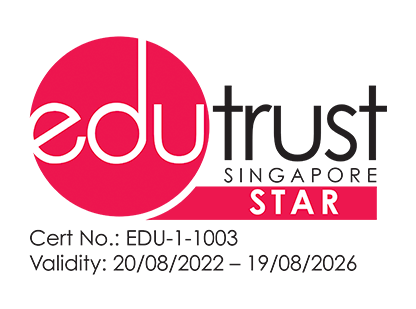Top 10 Programming Languages You Must Learn in 2023

Not too long ago, the world of programming was perceived by many as “remote” and “mysterious”. Today, programming skills are in high demand, and can often lead to a lucrative career path.
Whether you want to be a web developer, programmer, data scientist, or one of the many other data- and tech-forward roles, a solid understanding of top programming languages will greatly help.
What is a Programming Language?
A programming language is a method of “communicating” with computers, used by programmers or developers.
It is a computer language that consists of a set of rules that allows values to be converted into various methods of generating machine codes or graphical elements, to build software programmes, applications, and scripts.
Programming Languages You Should Learn
1. JavaScript
JavaScript is one of the most widely used programming languages. It is used for client-side scripting on 98.4% of websites surveyed,1 and is widely used as a programming language for web development, backend development, mobile development, and game development.
JavaScript is a relatively simple language to learn, making it ideal for UI/UX designers, full-stack developers, and software engineers to experiment with.
What JavaScript is used for:
- Front-end web development
- Back-end web development
- Mobile application development
2. Java
Not to be confused with JavaScript, Java is one of the most powerful programming languages, allowing coders to easily create a wide range of applications. Java is marketed as a “write once, run anywhere” coding language because it can run on any platform, operating system, or device, regardless of which operating system was used to write the original code.
From software engineering to backend web development, data science, and big data, Java can pretty much do it all! This makes Java an excellent programming language to learn for any coding enthusiast.
What Java is used for:
- Mobile development
- Desktop software
- Game development
- Big data technology
3. Python
Python, one of the most beginner-friendly programming languages available out there, has quickly gained popularity due to its learning fundamentals and readability, owing to its syntax familiarity with English.
Python is a high-level and general-purpose programming language that can be used for a wide range of tasks, including data analysis and visualisation, web development, prototyping, and automation. It is also an open-source language, allowing source codes to be modified to meet specific requirements. Python is ideal for learning the fundamentals of programming if you are new to coding.
What Python is used for:
- Data visualisation
- Data analysis
- Machine learning
- Artificial intelligence
- Backend web development
- Game development
4. R
R is an open-source programming language that is often used in statistical computing and graphical presentation for data visualisation and analysis. It is widely utilised in numerous industries, among them finance, healthcare, and research, and its applications include software development, business analysis, and statistical reporting.
One of the many reasons that make R an attractive programming language is that it’s platform-independent, meaning that it runs on pretty much all operating systems. It can also communicate with other programming languages, like Python, Java, and C++. In addition, R is great for machine learning operations, like regression and classification, and offers features and packages for the development of artificial neural networks.
What R is used for:
- Data analysis
- Statistical reporting and modelling
- Software development
- Machine learning algorithms
- Fraud detection
- Demand forecasting
5. C++
C++ can be found just about everywhere. It powers search engines, virtual reality applications, air transportation, filmmaking, and even outer-space exploration! Even when there is limited hardware space or energy available to power an application, with C++, programmers can easily fine-tune their code to run efficiently on a variety of platforms and devices.
C++ is a popular programming language for numerous reasons, including its speed, efficiency in managing system resources, and dependability in performing critical tasks.
What C++ is used for:
- Operating systems
- Game development
- Databases
- Web browsers
- Machine learning tools
- AR/VR applications
- Flight software
- Film production
6. C
C is a versatile language popularly used in system programming, embedded systems, and application development. It is known as a compiled language, meaning that the source code must be compiled into machine code before it can be executed, providing an additional layer of security.
C also provides low-level access to memory and system resources, making it a powerful and efficient programming language for developing operating systems and device drivers, and is easy to learn due to its relatively small set of keywords and syntax rules.
What C is used for:
- Desktop operations
- Video games
- Embedded systems
- App development
- Scientific computing
- Robotics
- Security
7. Ruby
A dynamic and object-oriented programming language, Ruby is designed to be easy to read and write, with syntax similar to natural language. It provides a high level of abstraction from the underlying hardware and operating system, allowing developers to write code that is more portable and easier to maintain.
Ruby includes garbage collection, which automatically frees up memory that is no longer in use, reducing the possibility of leaks and errors. It also supports a variety of programming paradigms, including procedural, functional, and metaprogramming.
What Ruby is used for:
- Web development
- Database programming
- Game development
- Data visualisation
8. PHP
PHP is a popular server-side scripting language used for web development. Created in 1994 by Rasmus Lerdorf as a set of Common Gateway Interface scripts to track visitors to his website, it has since evolved into a programming language that powers millions of sites.
PHP is an easy-to-learn interpreted language, meaning the code is executed on the server at runtime rather than being compiled into an executable file. This allows for the rapid development and deployment of web apps. A key feature of this programming language is its ability to interact with databases, including MySQL and SQLite, allowing for the creation of dynamic, data-driven websites.
What PHP is used for:
- Web development
- Content management systems
- Command-line scripting
9. SQL
A programming language used to query and manipulate data stored in various databases, SQL is becoming increasingly popular with its advantages in utilisation for both technical and non-technical professionals in different industries.
Data is everywhere now, and SQL allows you to communicate with your preferred databases to store, retrieve, manage, and manipulate data within a database management system to gain information and draw conclusions.
What SQL is used for:
- Database management
- Web applications
- E-commerce applications
10. Swift
Developed by Apple Inc, Swift is a multi-paradigm programming language introduced in 2014 and is now the primary language used to develop applications for Apple platforms. Its syntax is simple, expressive, and comprises many modern features, making it easier to write safer, more concise code.
One of Swift’s main features is its strong type system, which helps catch errors and prevent bugs even before they occur. It also includes automatic memory management, cutting down the risk of memory leaks and related errors.
What Swift is used for:
- iOS mobile apps
- Game development for iOS devices
- Machine learning
- AR/VR for Apple platforms
- Internet of Things
Ready to Start Coding?
Whether you are an experienced coder or are just starting out in the world of programming, knowing the ins and outs of these popular programming languages is a fantastic way to upskill and advance your career.
At Singapore Institute of Management, our Graduate Diploma in Data Science (E-Learning) offers the Principles of Programming (Python) module, designed to enable you to evaluate and apply the appropriate analytic techniques and programming tools to investigate and solve characteristic data science problems.
Interested? Schedule a call with our Student Advisors today for a free eligibility check or to learn more about this part-time programme made for working professionals.
References







